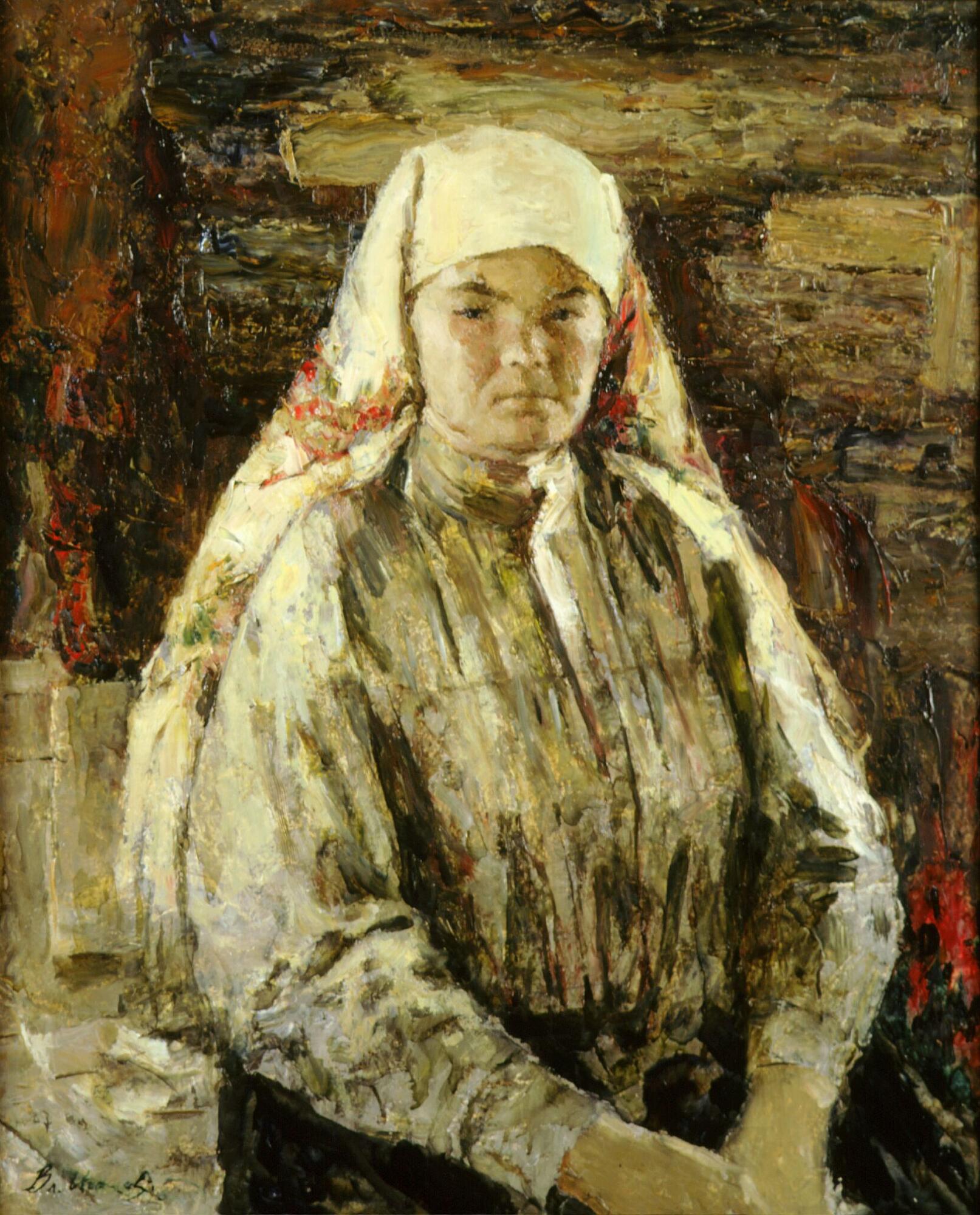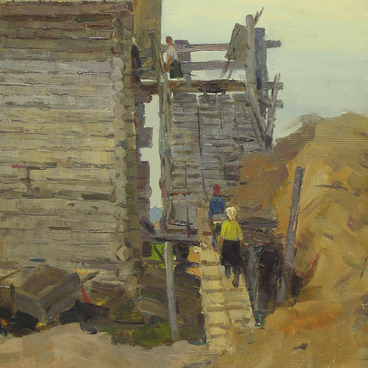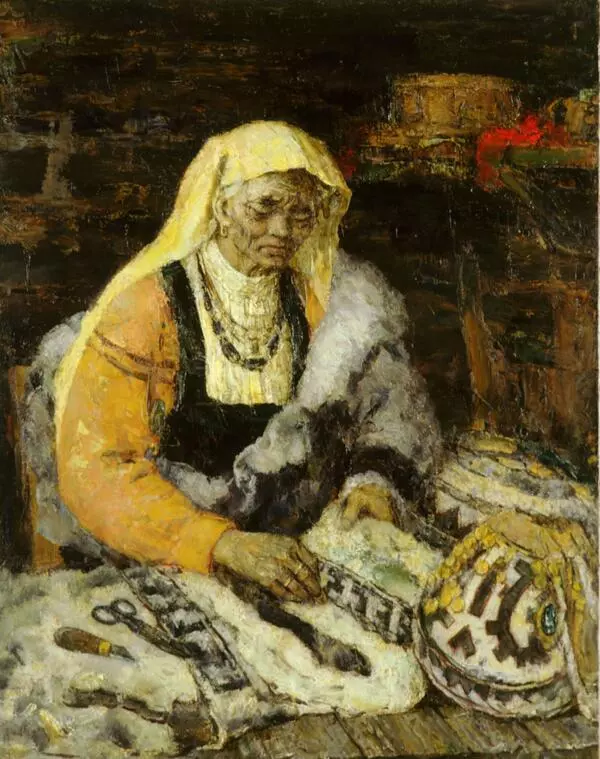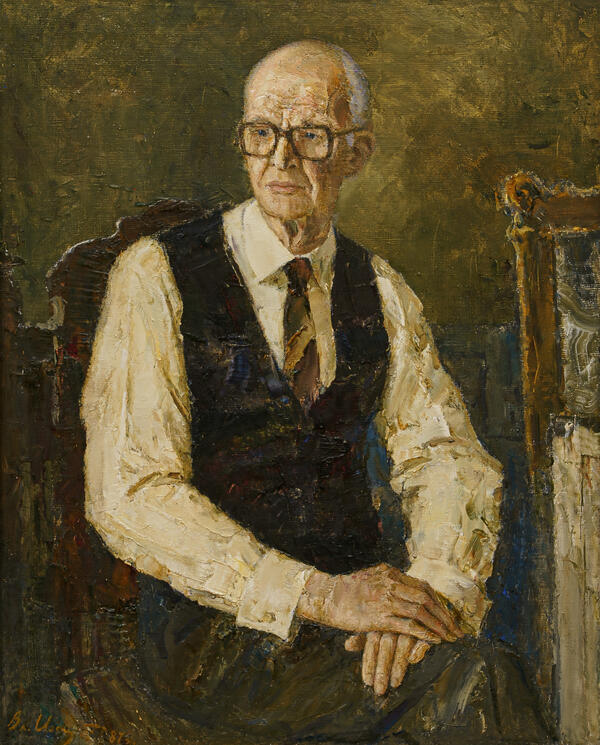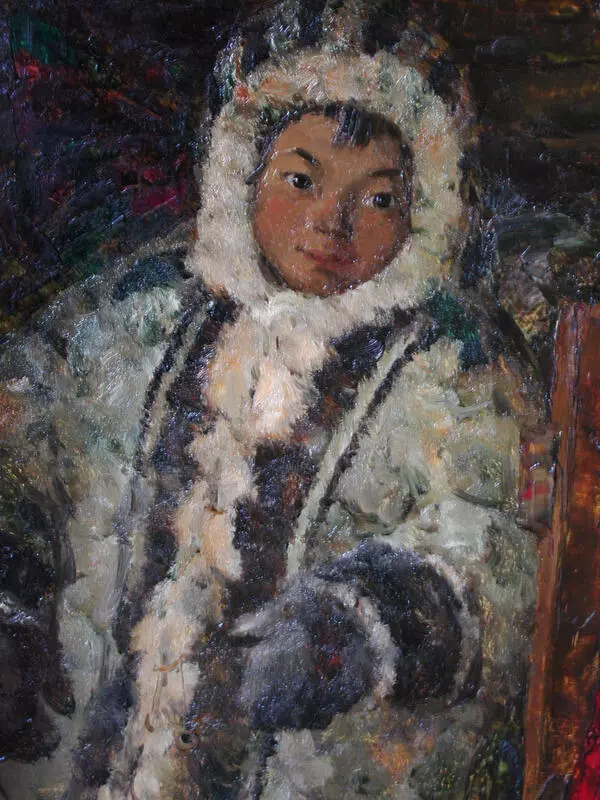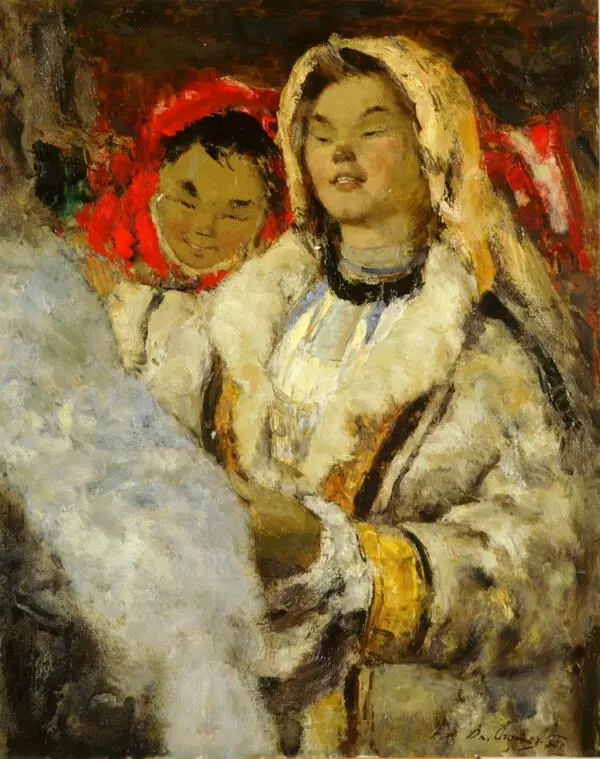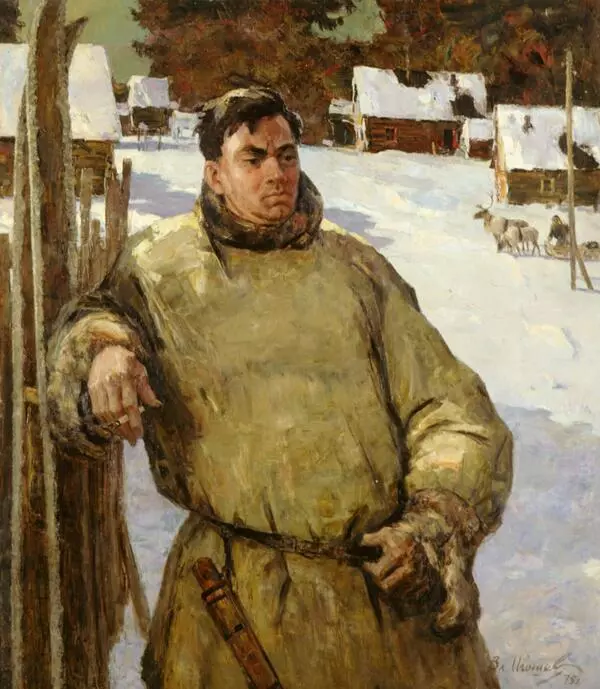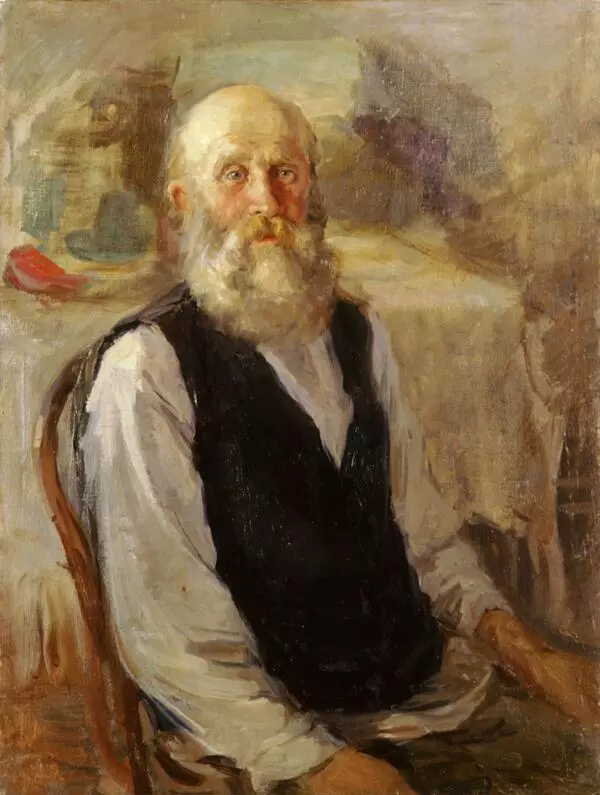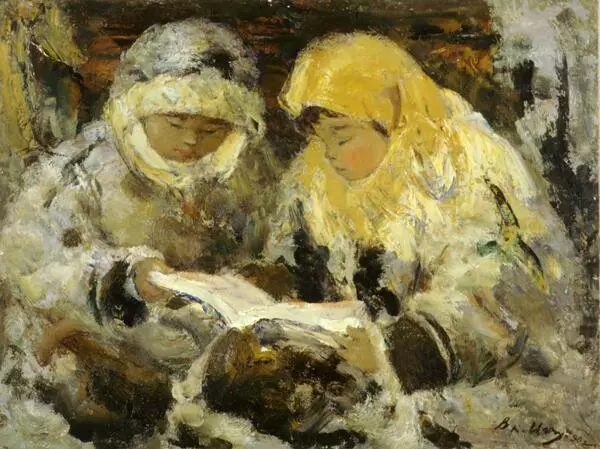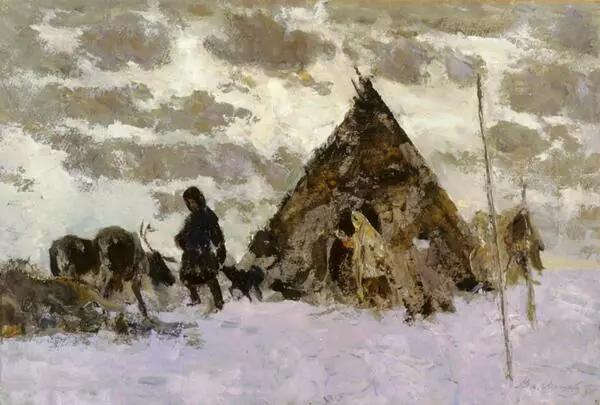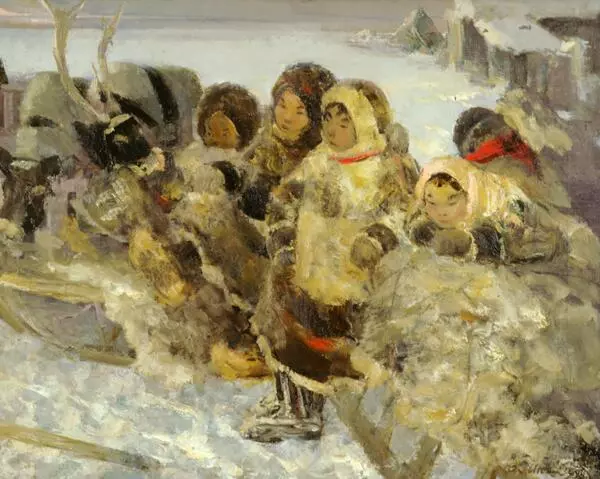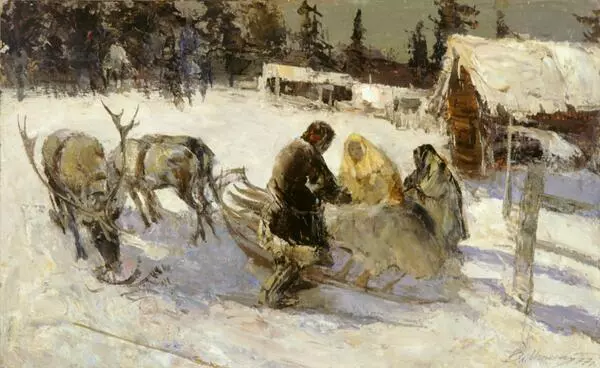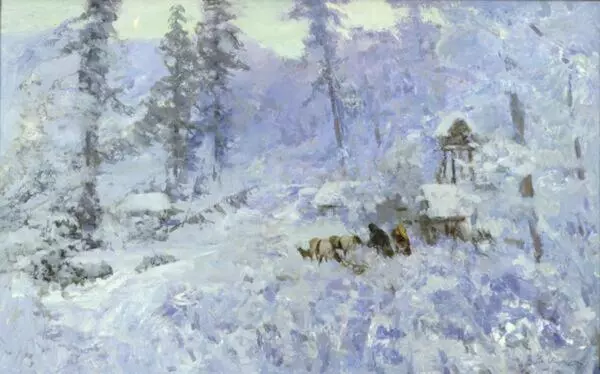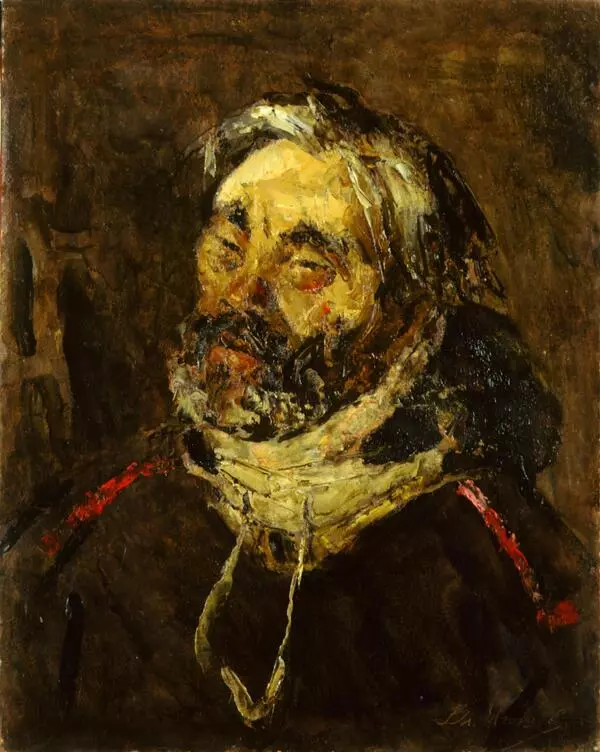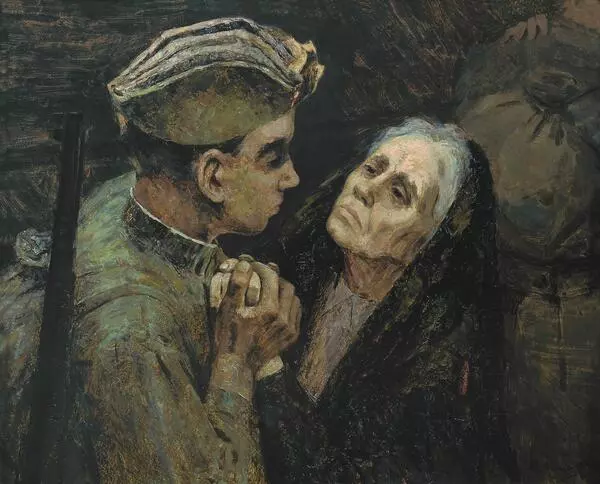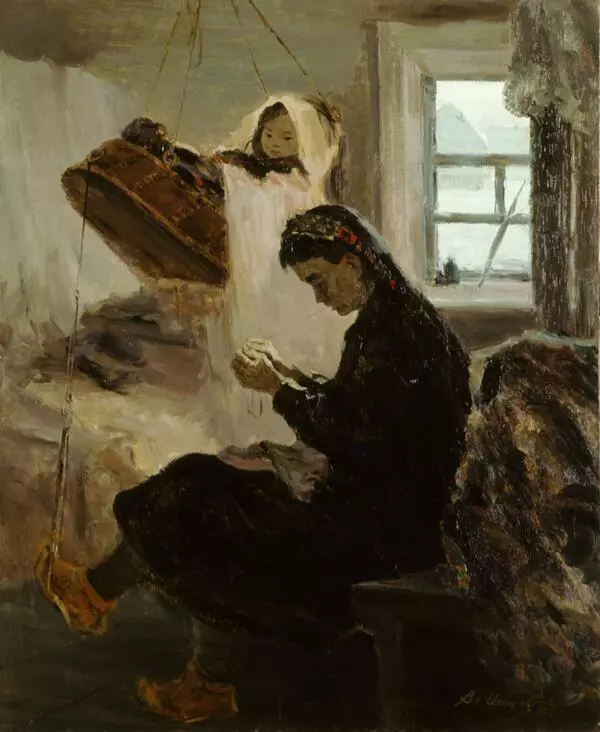The People’s Artist of the USSR Vladimir Igoshev was born in 1921 in Igoshevsky village in the north of Bashkiria. The future artist studied in Ufa at the Arts Faculty of the Ufa College of Arts. During the Great Patriotic War he served in the Soviet army. He was seriously wounded during the fight for the Fourth Height not far from Stalingrad and spent almost a year in the hospital.
After the war Vladimir Igoshev enrolled at The Surikov Art Institute in Moscow, where he was a student of a full member of the USSR Academy of Arts Georgy Ryazhsky. Igoshev first visited the North in 1954. There he explored the local traditions, worked on the portraits, landscapes and genre paintings. In 1968 Igoshev moved to Moscow and soon became a professor at Moscow Architectural Institute and Moscow State Pedagogical University. In 1982 the artist won the State Prize of Russia named after I. E. Repin.
Portrait Kolkhoz Woman from the Village of Nerokhi was painted in 1983. In his female portraits the artist showed not only the exotic beauty of the women of the North, but also their emotional state and personality. He had a keen eye for their shyness, trustfulness, and simplicity. The image of a female villager shows a special type of a female beauty, where lyricism and delicacy are hidden behind the external roughness. In such portraits the artist also paid attention to the decorative side, he properly showed the details of the clothes and specifics of textures. Headcloth was a special element of composition. The Ob-Ugric women used to wear kerchiefs since childhood. Even though a kerchief is not adapted for the northern climate, it was used for a certain “coverture” connected to the “avoidance” rite. The kerchief was tied around the head, and in such a way a woman symbolically covered one of her souls.
Igoshev wrote about his portraits: “A cattleman and a scientist, an artist, a geologist, a doctor and a miner, a kolkhoz woman and an academician, a fisherman, s steelworker, a partisan and a subway construction worker. In this collection there are many portraits of people of different nationalities: Russian and Mongol, Tuvinian and French; Vietnamese, Indian faces, young and darkened with the time, happy and sorrowful ones, contemplative and enthusiastic ones.”
After the war Vladimir Igoshev enrolled at The Surikov Art Institute in Moscow, where he was a student of a full member of the USSR Academy of Arts Georgy Ryazhsky. Igoshev first visited the North in 1954. There he explored the local traditions, worked on the portraits, landscapes and genre paintings. In 1968 Igoshev moved to Moscow and soon became a professor at Moscow Architectural Institute and Moscow State Pedagogical University. In 1982 the artist won the State Prize of Russia named after I. E. Repin.
Portrait Kolkhoz Woman from the Village of Nerokhi was painted in 1983. In his female portraits the artist showed not only the exotic beauty of the women of the North, but also their emotional state and personality. He had a keen eye for their shyness, trustfulness, and simplicity. The image of a female villager shows a special type of a female beauty, where lyricism and delicacy are hidden behind the external roughness. In such portraits the artist also paid attention to the decorative side, he properly showed the details of the clothes and specifics of textures. Headcloth was a special element of composition. The Ob-Ugric women used to wear kerchiefs since childhood. Even though a kerchief is not adapted for the northern climate, it was used for a certain “coverture” connected to the “avoidance” rite. The kerchief was tied around the head, and in such a way a woman symbolically covered one of her souls.
Igoshev wrote about his portraits: “A cattleman and a scientist, an artist, a geologist, a doctor and a miner, a kolkhoz woman and an academician, a fisherman, s steelworker, a partisan and a subway construction worker. In this collection there are many portraits of people of different nationalities: Russian and Mongol, Tuvinian and French; Vietnamese, Indian faces, young and darkened with the time, happy and sorrowful ones, contemplative and enthusiastic ones.”
